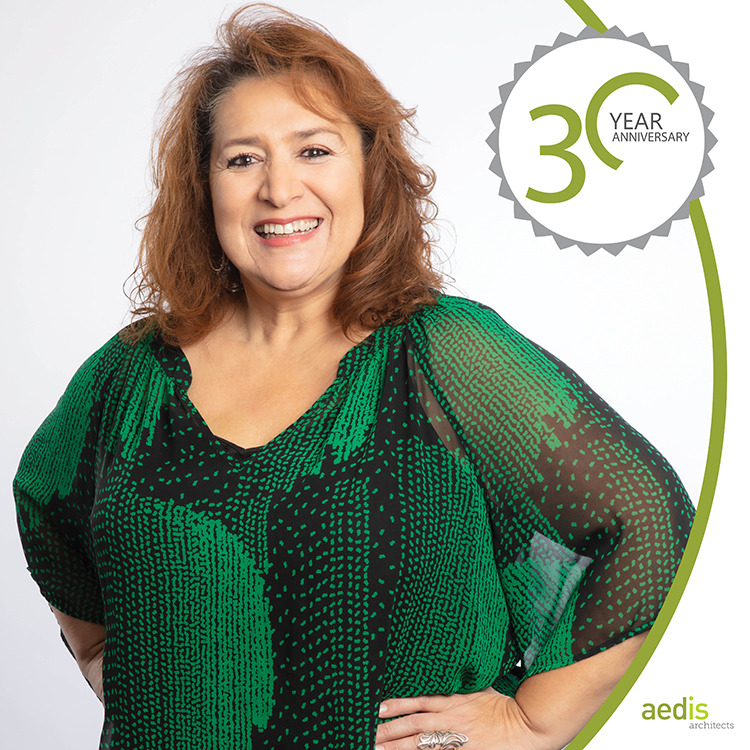
Thank you, DeeDee Mendez, for 30 years of dedication, friendship, and excellence! You have been instrumental in making us a success, and we appreciate your endless hours of commitment. You continue to leave a #PositiveLastingImpact on our clients and the communities we serve. We are truly lucky to have you. Cheers to this amazing milestone!
San Jose Business Journal, February 2021
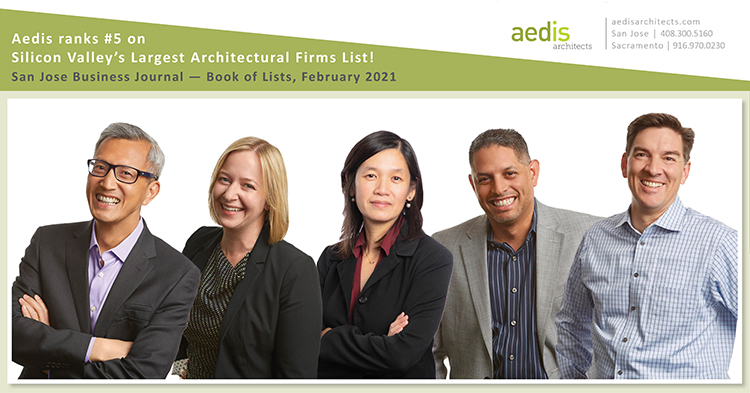
Silicon Valley Business Journal named Aedis Architects the 5th largest architectural firm in the Silicon Valley region. The annual Architectural Firms List ranks design firms based on 2020 revenue from local work. Aedis is honored to hold on to spot #5, for the second year running.
#SiliconValleyBusinessJournal #BookOfLists #SanJoseArchitects #SiliconValley
Thang Do, FAIA John Diffenderfer June Yip Joe Vela, AIA Michelle Netzley
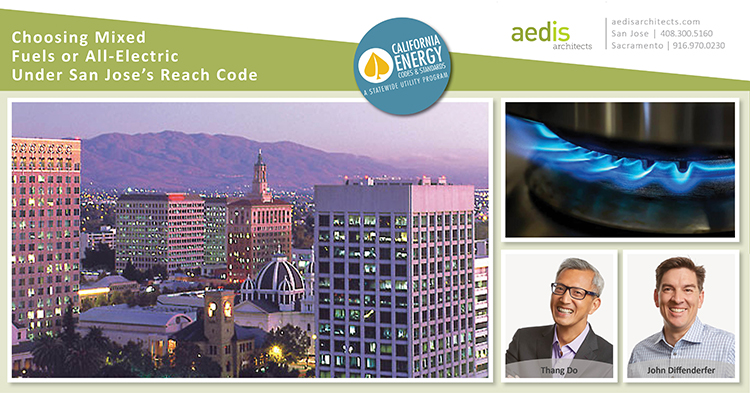
San Jose’s newly adopted Reach Code presents a challenge for high-rise multi-family residential developers: build all-electric or stay with “mixed-fuel” (gas and electric). Intending to reduce carbon emissions across all new and renovation projects, the Reach Code all but bans gas in new residential buildings. However, for now, San Jose’s Reach Code continues to allow gas in high-rise multi-family residential buildings, subject to some penalties. The most significant of which is a higher baseline energy performance standard (6% margin above typical California Energy Code). With the bar set higher, potentially increasing costs for the building envelope, HVAC, and lighting systems, developers must consider the following in deciding whether to adopt an all-electric design:
Recognize that to combat climate change, San Jose, like jurisdictions everywhere, is heading in the direction of eliminating gas service. After August 1, 2021, all new developments will have to be all-electric, without the gas option. A commercial kitchen is the only remaining exception.
Choosing gas now only delays the inevitable switch to all-electric in the future.
You can check out these great resources to help you evaluate options thoughtfully.
San Jose Reach Code Summary: https://www.sanjoseca.gov/your-government/departments-offices/environmental-services/climate-smart-san-jos/2019-reach-code-initiative
Statewide Reach Code Program: https://localenergycodes.com/
Congrats John Diffenderfer
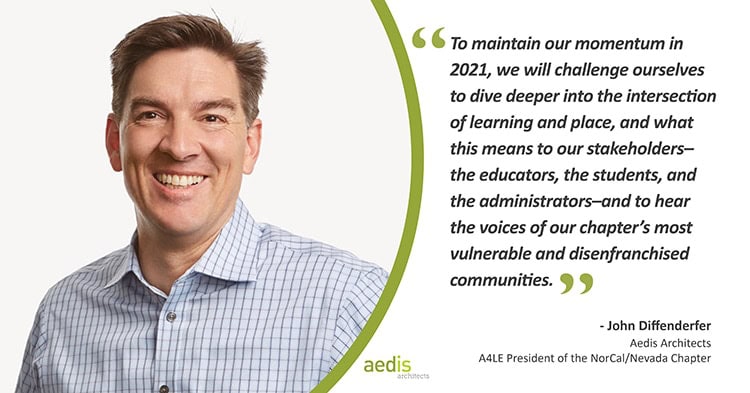
Aedis is proud to announce John Diffenderfer as A4LE’s 2021 President of the NorCal/Nevada Chapter. He is grateful for the opportunity to work with a committed team of industry leaders to promote innovation at the intersection of learning and place. #A4LE #learning #schooldesign John Diffenderfer
Campus Modernization, Phase 2
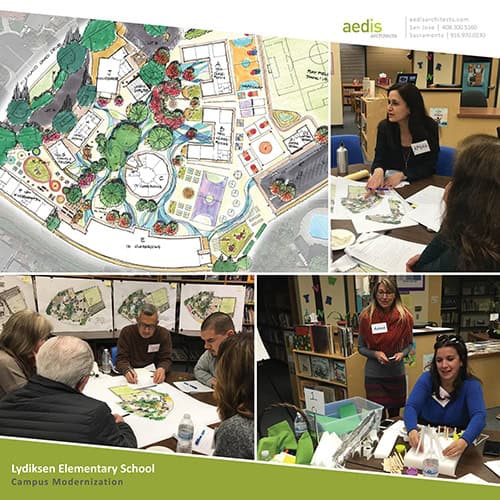
Pleasanton Unified School District hired Aedis to facilitate an in-depth programming and design process to modernize Lydiksen Elementary School. Aedis engaged the staff and community in a Design Thinking process that delved deep into the curriculum and pedagogical goals of the school and PUSD’s aspirations to deliver #StudentCentered learning in a socio-emotionally supportive environment.
With the completion of Phase 1, we are excited to see the District’s vision begin to come to life. We are now embarking on Phase 2 of this exciting project and are honored to be part of the school’s continued transformation!
#StakeholderEngagement #SchoolModernization
Thang Do, FAIA, Design Principal Afsha Ali, AIA, Project Architect Anna Harrison, Education Planner
A strong history of leadership and involvement

It is with great excitement that we congratulate Srivarshini Balaji for her role on the 2021 Board of Directors for the Silicon Valley Chapter of the AIA! She follows in the footsteps of fellow Aediseans who, over the years, have held positions of leadership in the AIA, from President and Treasurer to a wide range of Committee Chairs and Board Members. #aiascv June Yip Thang Do, FAIA Liam Hanlon, Assoc. AIA John Diffenderfer Annalee Groner Joe Vela, AIA Derek Wong
San Jose, CA
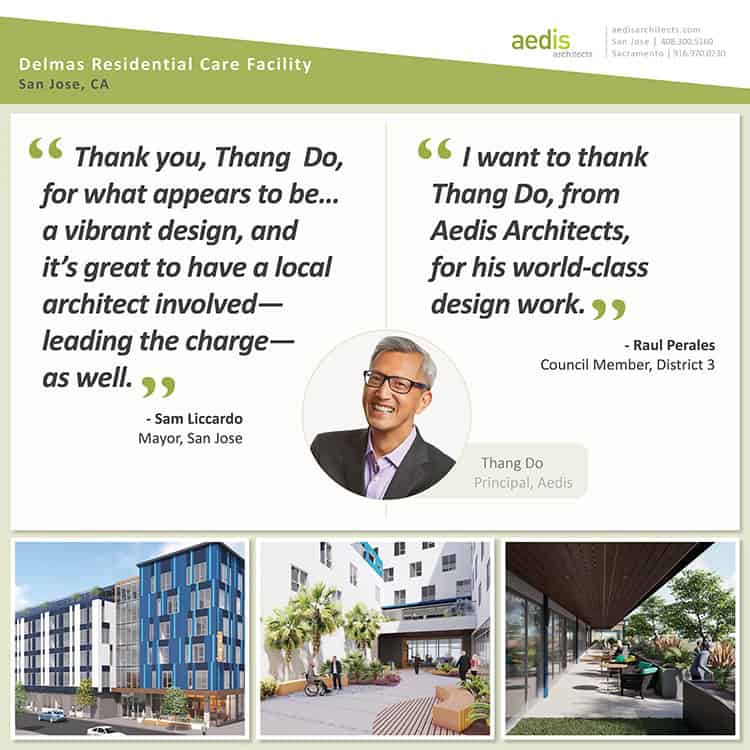
On January 26, 2021, the San Jose City Council unanimously approved Aedis’ design for the Delmas Residential Care Facility, the first senior living facility to be built in Downtown San Jose in the last several decades. The project features a sophisticated and urban environment for the elders, coupled with a biophilic design with generous outdoor provisions. Aedis has been partnering with the developer Urban Catalyst to carry out extensive community outreach efforts. With their approval, members of the City Council offered some kind words to Aedis and Thang Do.
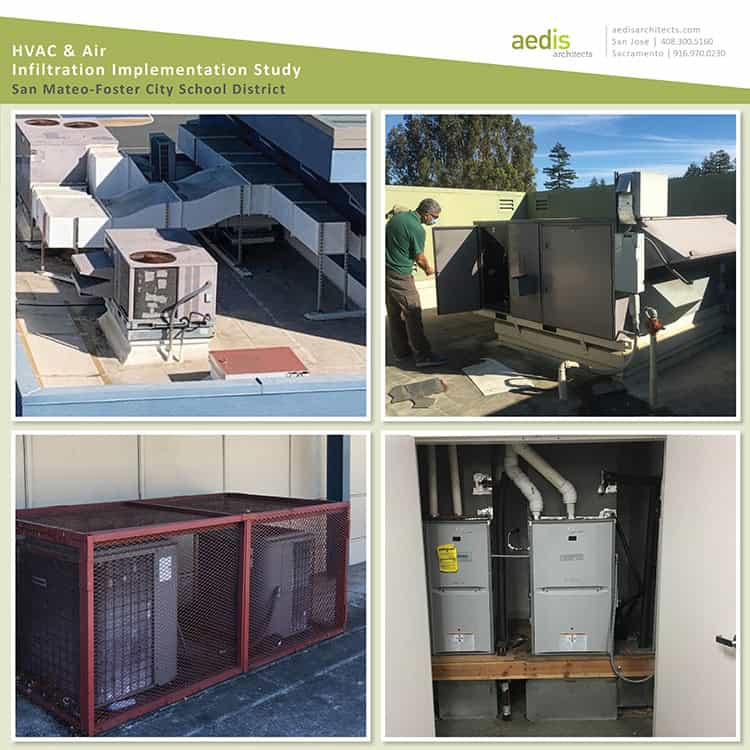
On January 21, 2021, Aedis Architects presented to the San Mateo-Foster City School District its “HVAC & Air Infiltration Implementation Study”. The Board of Trustees accepted Aedis’ recommendations and unleashed nearly $130 million of Measure T funds to upgrade HVAC and air filtration in the District’s 21 schools. This work is the key to improving the comfort, health, and safety of District indoor environments in a pandemic and post-pandemic era. These recommendations also move the District toward its Board-mandated strategic objective goal: zero-net-energy.
The Aedis-led study team, which included Cypress Engineering Group and American Consulting Engineers-Electrical Inc. worked closely with the District’s maintenance staff to inventory the mechanical and electrical systems at each school. The process was fast-tracked due to the urgent need to reopen schools in the COVID-19 environment. The team evaluated an extensive range of options, factoring in the schedule, cost, energy efficiency, site constraints, future construction plans, and electrical load requirements.
Aedis completed the Study in the context of the ongoing COVID-19 pandemic as well as the increasingly frequent climate-change-related heat waves and wildfires that have ravaged California in recent years. It outlined filtration options for indoor air quality (IAQ), considering recommendations issued in ASHRAE guidelines, the National Energy Management Institute, and other white papers published regarding IAQ, ventilation, and the COVID-19 virus. The recommendations included upgrading filtration to ASHRAE recommended MERV 13, now a California Energy Code requirement. Other technologies such as needlepoint bipolar ionization and UV-C lights were also explored, with bipolar ionization recommended to be used on a limited basis to supplement where MERV-13 is not feasible. The Study confirmed that the District-initiated installation of portable air purifiers equipped with HEPA filters for fine particle filtration was an appropriate measure to supplement built-in air filtration.
We recognize and applaud the San Mateo-Foster City School District’s leadership in transforming indoor environments to cope with the effects of the pandemic and climate change. We want to especially thank Patrick Gaffney, Chief Business Officer, Tish Busselle, Advisor to the Superintendent, and Joel Cadiz, Former Director of Facilities, who were instrumental in supporting the creation of the report and providing us with meaningful and timely feedback.
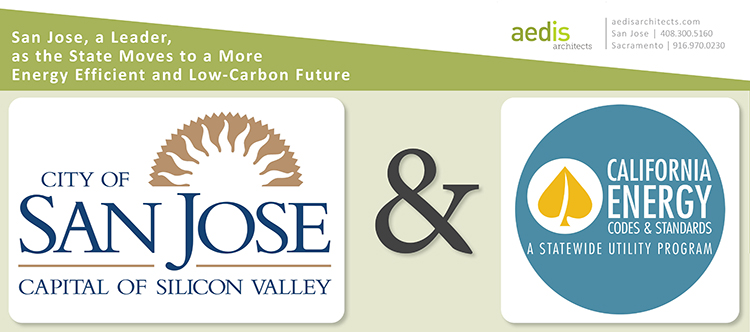
Local Amendments to the State Codes
In general, a Reach Code is a local amendment to the California Building Standards Code. In California, local governments have the authority to adopt amendments to the Code, commonly known as “Title 24” of the state’s Code of Regulations. In this article, we are talking about Reach Codes that apply to Title 24, Part 6 – California Energy Code. Since 1978, California’s Energy Code has reduced wasteful and unnecessary energy consumption in newly constructed and existing buildings. It is updated every three years. Non-residential buildings built under the current 2019 version are about 30% more efficient than those governed by the 2016 code. Residential buildings are about 53% more efficient.
Local amendments are often referred to as Reach Codes because they require performance that exceeds that of the minimum state code, in advance of its future updates. Today, these codes only affect Aedis’ projects governed by the local jurisdictions, such as San Jose, and Palo Alto. On our public-school projects, the Division of the State Architect enforces the basic Title 24, Part 6 (the Energy Code), and Part 11 (CALGreen or “the Green Code”). All local jurisdictions enforce Part 11, also.
There are two categories of Reach Codes:
Through a series of calculations, the performance approach achieves compliance by showing that a building’s proposed energy budget (energy consumption per square foot of floor space) is equal to or better than an established enhanced baseline, allowing developers freedom in their designs. This baseline varies by climate zone and building type, so the standards are matched to local conditions.
As of December 2020, at least 29 California jurisdictions have passed local Reach Codes. Notably, these have been in large metropolitan areas–like the City of Los Angeles and across the Bay Area, affecting a vast population–and smaller communities such as Lancaster and Davis.
San Jose’s Goal of Zero-Emission All-Electric Buildings
San Jose’s Reach Code establishes an augmented standard for new construction to be zero-emission all-electric buildings, encouraging the specification of electric equipment such as space heating, water heating, cooktops, and so on. The Reach Code falls short of an outright ban on gas and gas equipment. Buildings designed with gas must still comply with prescriptive measures that make the building capable of being all-electric in the future. They are also burdened with a more energy-efficient baseline to be considered Code compliant.
More information about San Jose’s Reach Code can be found here: https://rb.gy/pkolvn
Pittsburg, CA
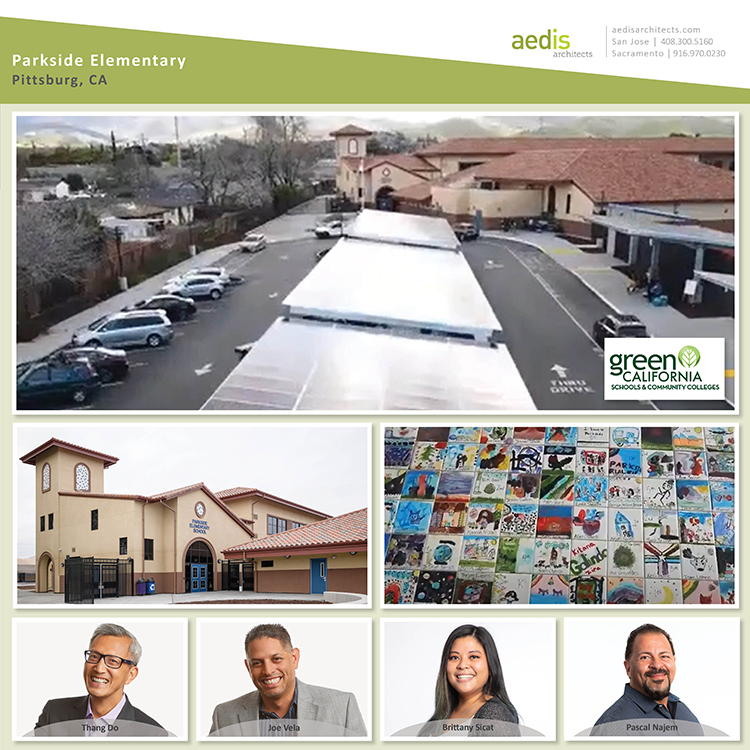
We are thrilled to congratulate Parkside Elementary in Pittsburg, CA on their ribbon-cutting ceremony on Friday. We were fortunate to lead the charge in the design of this ZNE school, complete with LED lights, solar panels, efficient AC units, and ceiling fans on an all-electric campus. The school did an exceptional job hosting a virtual grand opening which included speeches, pre-recorded interviews (our very own Pascal Najem had important information to add!) and even a virtual school tour.